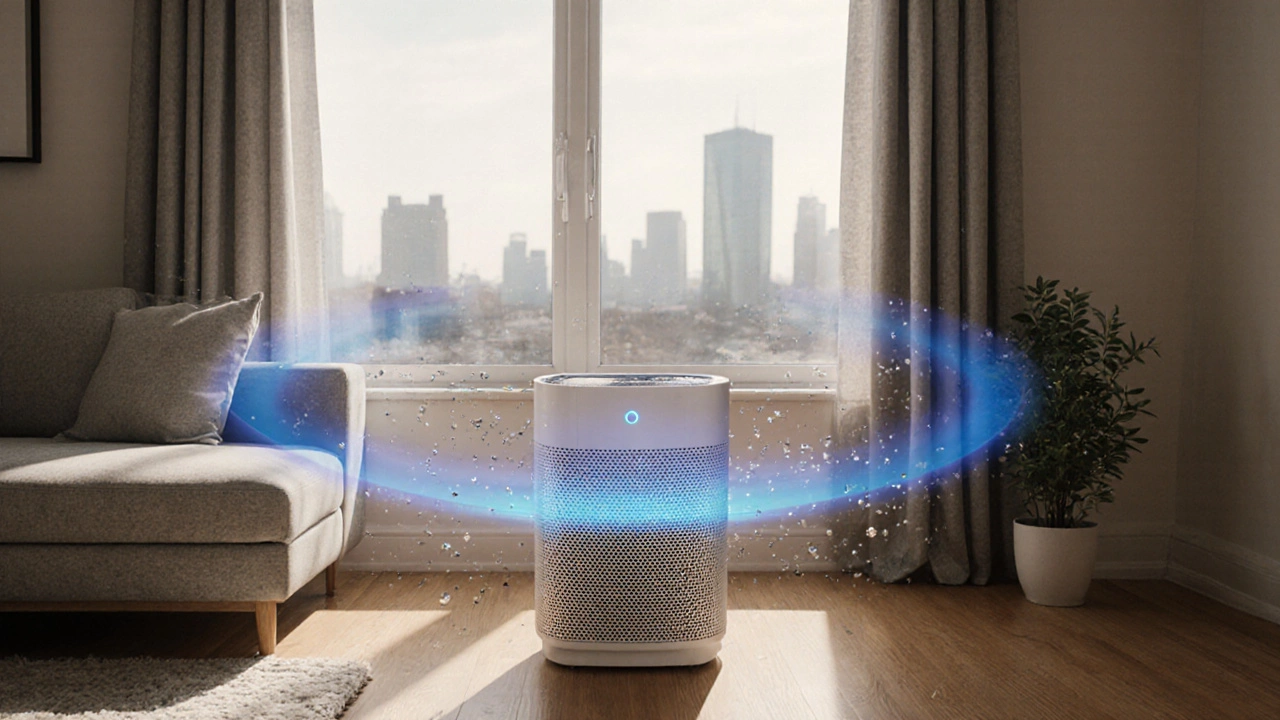When working with air changes per hour, the number of times the air in a defined space is replaced within one hour. Also known as ACH, it helps you gauge ventilation performance. A high indoor air quality, measure of how clean and breathable the indoor environment is often depends on achieving the right ACH. Modern HVAC system, heating, ventilation, and air‑conditioning infrastructure that moves and treats indoor air can be tuned to meet target rates, while portable solutions fill gaps where central ductwork falls short.
Most homeowners think ventilation is just about opening windows, but the science shows that a calculated ACH value guides real decisions. For a typical bedroom (around 150 ft³), the recommended ACH is 5–6, meaning the air should be refreshed roughly every 10 minutes. You can calculate it by dividing the airflow (in cubic feet per minute, CFM) by the room volume, then multiplying by 60. This simple formula lets you compare a window fan, an exhaust hood, or a whole‑house ventilation unit on equal footing.
Beyond the central ductwork, a few key devices directly affect ACH or complement it. An air purifier, a unit that filters particulate matter and gaseous pollutants from indoor air doesn’t add fresh air, but it improves perceived air quality by removing contaminants that a raw ACH count would miss. Look for a purifier with a CADR (clean air delivery rate) that matches at least half the room’s CFM to get a noticeable effect.
Portable air conditioners also play a role. While their primary job is cooling, many models include an exhaust vent that draws stale indoor air outside, effectively increasing ACH for the room they serve. Pair a 5000‑BTU unit with a properly sized vent and you’ll see the room’s air turnover rise by 1–2 ACH, which can be crucial during hot, humid months when windows stay shut.
For kitchens, range hoods with sufficient capture efficiency act like dedicated exhaust fans, pulling cooking fumes directly out. If a hood moves 400 CFM and the kitchen volume is 1,200 ft³, you’re adding about 20 ACH while the stove is on—far above the baseline needed for a healthy environment.
Even simple actions matter. Sealing unwanted leaks prevents uncontrolled drafts that can lower the effective ACH and waste energy. Conversely, strategically placed transfer grilles between rooms let conditioned air flow where it’s needed, smoothing out variations in local ACH without adding new fans.
When you combine a well‑sized HVAC system, targeted exhaust fans, and the right air purifier, you create a layered approach that meets both quantity (ACH) and quality (pollutant removal) goals. This synergy is why many energy‑efficiency programs require a whole‑home ventilation test alongside insulation checks.
Now that you understand how ACH ties together ventilation, HVAC design, and supplemental devices, you’re ready to dive into the detailed articles below. Each piece breaks down a specific product type, offers real‑world calculations, and gives actionable tips so you can tune your home’s air turnover for comfort, health, and lower energy bills.

Learn how to calculate the time an air purifier needs to clean a room, using CADR, room size, ACH and filter types to get faster, healthier air.